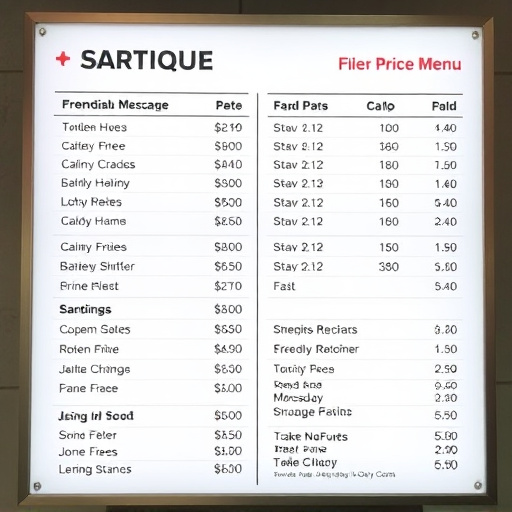The California Air Resources Board (CARB) is a state agency dedicated to improving air quality through stringent emissions standards, especially for CARB-compliant air intakes in vehicles. Their efforts focus on reducing harmful pollutants like nitrogen oxides and particulate matter, fostering automotive technology advancements, and promoting clean transportation options. Beyond vehicles, CARB regulates diverse sectors, ensuring California leads in comprehensive air quality management. The adoption of these standards has led to significant environmental improvements and advanced vehicle technologies, positioning California as a global leader in sustainable transportation and setting a benchmark for environmental protection.
The California Air Resources Board (CARB) plays a pivotal role in safeguarding the state’s air quality, implementing stringent regulations to reduce emissions. This article delves into the multifaceted operations of CARB and its influence on the automotive industry through CARB-compliant air intakes. We explore how these innovations contribute to environmental protection, examining enforcement mechanisms and future prospects. By understanding CARB’s mandate and its impact, we gain insights into California’s commitment to fostering clean air and sustainable transportation.
- Understanding CARB and Its Role in Air Quality Regulation
- The Impact of CARB-Compliant Air Intakes on Vehicles
- Ensuring Environmental Protection: CARB's Enforcement and Future Directions
Understanding CARB and Its Role in Air Quality Regulation

The California Air Resources Board (CARB) is a state agency with a pivotal role in regulating air quality and promoting clean air throughout California. Established under the California Environmental Quality Act, CARB has the authority to set emissions standards for various pollutants, including those from vehicles and industrial sources. One key area of focus is ensuring CARB-compliant air intakes in vehicles sold within the state. This involves setting strict guidelines for the design and performance of vehicle air intake systems to minimize pollution.
By implementing these standards, CARB aims to reduce harmful emissions such as nitrogen oxides (NOx) and particulate matter, which contribute to smog and other environmental issues. The board works with automakers to develop innovative technologies that meet these requirements, driving the market towards cleaner transportation options. Furthermore, CARB’s regulations extend beyond vehicles, covering a wide range of sectors including agriculture, construction, and small engines, ensuring California leads in air quality management across various industries.
The Impact of CARB-Compliant Air Intakes on Vehicles

The implementation of CARB-compliant air intakes in vehicles across California has had a profound impact on both environmental standards and automotive technology. These advanced systems are designed to meet the stringent emissions regulations set forth by the California Air Resources Board (CARB), aiming to reduce harmful pollutants like nitrogen oxides and particulate matter. By ensuring these vehicles emit fewer pollutants, CARB-compliant air intakes play a crucial role in improving California’s air quality, particularly in urban areas known for their heavy traffic congestion.
The shift towards CARB compliance has driven significant advancements in vehicle engineering. Manufacturers have developed innovative solutions to optimize air flow while maintaining robust emission control. This includes the use of high-efficiency filters and sophisticated sensor technology that monitors engine conditions in real time, ensuring optimal performance and emissions reduction. As a result, consumers benefit from cleaner air and improved overall vehicle performance, solidifying California’s position as a leader in both environmental protection and automotive innovation.
Ensuring Environmental Protection: CARB's Enforcement and Future Directions

The California Air Resources Board (CARB) plays a pivotal role in ensuring environmental protection by setting and enforcing emission standards, including regulations for CARB-compliant air intakes in vehicles. Their comprehensive approach to regulation involves rigorous testing and monitoring to minimize harmful pollutants, particularly in an era of growing environmental awareness and climate change concerns.
Looking ahead, CARB’s future directions focus on further strengthening these standards to combat not only traditional air pollutants but also the burgeoning issue of greenhouse gas emissions. By fostering innovation in cleaner technologies and promoting the adoption of electric vehicles and other low-emission alternatives, CARB aims to revolutionize the automotive sector, making California a leader in sustainable transportation and setting a precedent for environmental protection globally.
The California Air Resources Board (CARB) plays a pivotal role in safeguarding California’s air quality through stringent regulations on vehicle emissions. By promoting the adoption of CARB-compliant air intakes, these standards not only enhance environmental protection but also contribute to improving overall air quality. As we look towards the future, CARB’s continued enforcement and innovative approaches will be essential in ensuring a cleaner, healthier environment for all Californians, solidifying its position as a leader in sustainable transportation.














